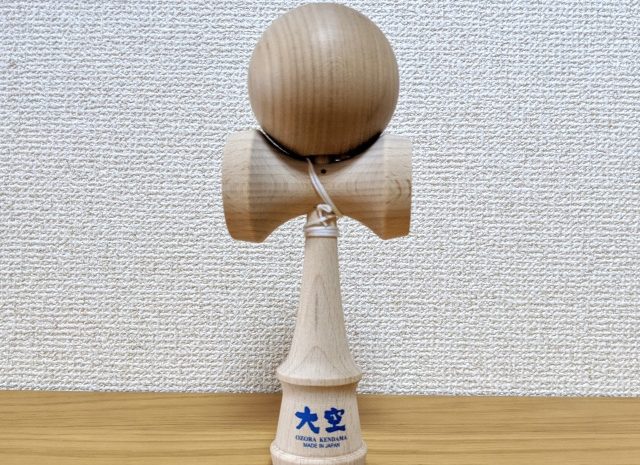
There’s never been a better time to brush up on the old eye-hand coordination.
Recently our Fukuoka-based writer Masanuki Sunakoma went to his local home improvement center to buy some toilet paper, not out of any panic though. He was just running out. Naturally, upon entering the store, he found all the shelves bare.
He was all set to give up when out of the corner of his eye he spotted a rack of toys with a kendama hanging among them. He remembered those things being popular when he was in elementary school but was never good at it himself.
However, now that he was a middle-aged man, perhaps his motor skills had finally caught up and were able to handle this tricky little ball game. Masanuki quickly grabbed it off the shelf, not realizing it was an official “Ozora” kendama by Yamagata Kobo and certified by the Japan Kendama Association.
After a brief shock at the 1,815 yen (US$17) charge at the register, he became the proud owner of a mighty fine kendama. Considering the Fukuoka government was advising everyone to stay indoors as much as possible, the steep price tag would probably pay off in the long run.
For those unfamiliar with the kendama, it’s basically a cup-and-ball game on steroids. Rather than a single cup into which the ball must go, there are three different sized cups – although calling those shallow things “cups” seems way too generous, so I prefer “dishes” – and there’s a spike for good measure too.
Here’s a rundown of the functional parts of a kendama:
The most basic move that any aspiring kendama master ought to begin with is simply flicking the ball into the large dish. If you can’t do this then there really is no hope.
As for Masanuki…
▼ “Argh! Come on!!!”
He was every bit as bad as he was in grade school. Luckily, he had a secret weapon that didn’t exist back then. Racing to his smartphone, Masanuki quickly Googled “kendama tips” and learned that the keys to successful kendama tricks are relaxing your body and letting your knees do most of the work.
Back at it…
▼ “Haha!!! I did it!”
Having successfully broken in his big dish, Masanuki felt more confident and looked up some of the tricks printed on a piece of paper included with the kendama.
Next was another entry-level trick known as a Moshikame, which involved juggling the ball back and forth between the large and medium dishes. He remembered a lot of the other kids in school doing this and seeing who could go the longest.
Now that he got the feel of it, it didn’t take long for Masanuki to rack up five Moshikame in a row.
After that, he decided to try a much more difficult maneuver called Around Japan. This involved landing the ball in the small dish, then the large dish, and finally onto the kensaki. The kensaki part was especially hard because the hole in the ball had to be perfectly lined up with the spike to land properly.
Luckily, Masanuki was full of confidence and had nothing but time on his hands while stuck at home. A few hours of focused practice and…
Masanuki learned that the trick was to set up the hole’s position from the very beginning. Upon landing it in the small dish, the hole should be pointing at yourself.
▼ Ideal trajectory of the first throw
When transitioning to the large dish, keep the ball in more or less the same position but move the ken about 90 degrees to line up the final kento shot. Making sure not to throw it too high helps to keep it stable.
Then, on the last throw flick it a bit to get the hole pointing downward so it lands on the kensaki.
▼ Ideal trajectory of the last throw
Even knowing this, anyone should expect to put in a few hours of failure before getting it down. But once landed, Masanuki got a feeling of accomplishment that blew away the gloom and doom of self-isolating during a global pandemic, at least for a little while.
And he’s still got a whole sheet of tricks to attempt, culminating in the extremely difficult Airplane maneuver in which he must hold the ball and then toss the ken in such a way that the kensaki lands directly into the hole.
Depending on your part of the world, a kendama might be as hard to get ahold of as toilet paper, but there’s still lots of easily accessible skills just begging to be picked up during long bouts indoors, from juggling to playing the spoons. They’re all great ways to get in a little bit of self-improvement and, more importantly, stay out of trouble.
Photos ©SoraNews24
● Want to hear about SoraNews24’s latest articles as soon as they’re published? Follow us on Facebook and Twitter!
[ Read in Japanese ]

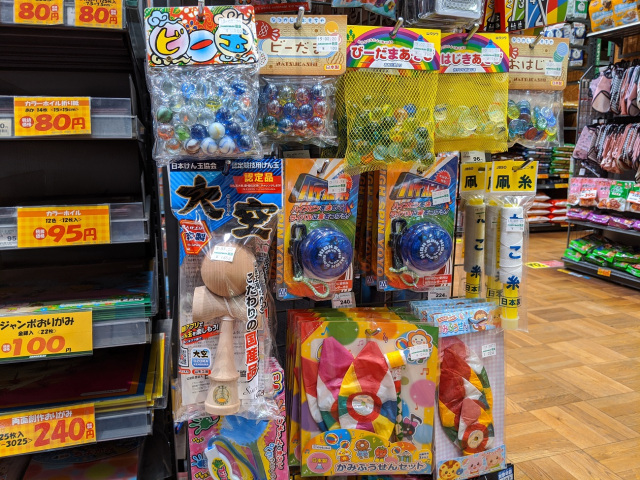
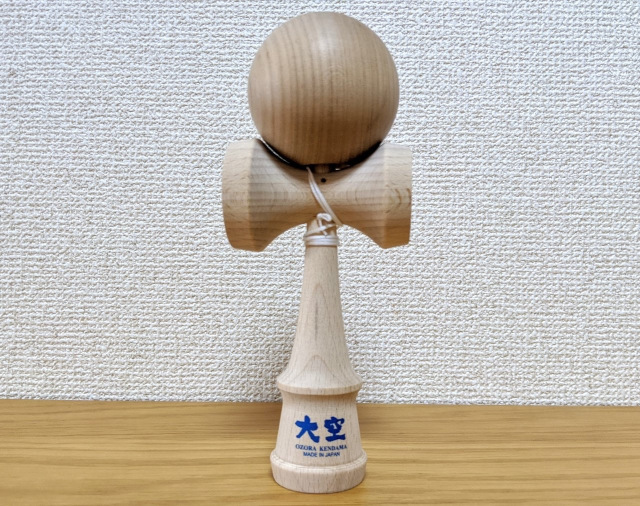

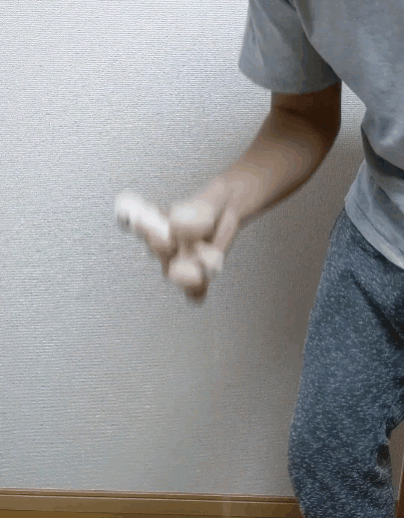
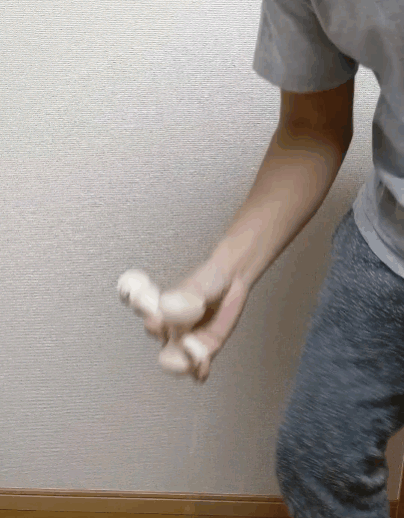

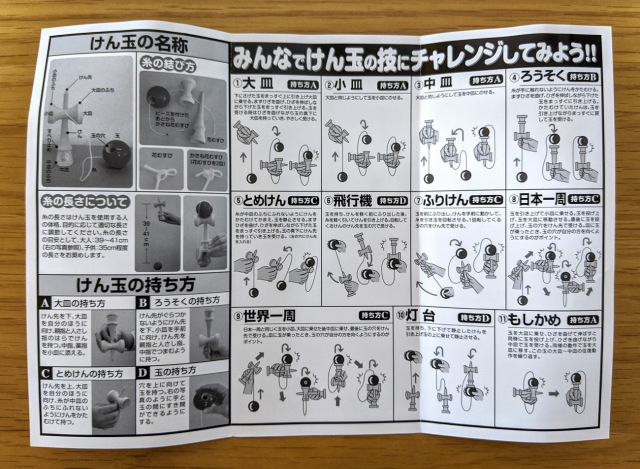
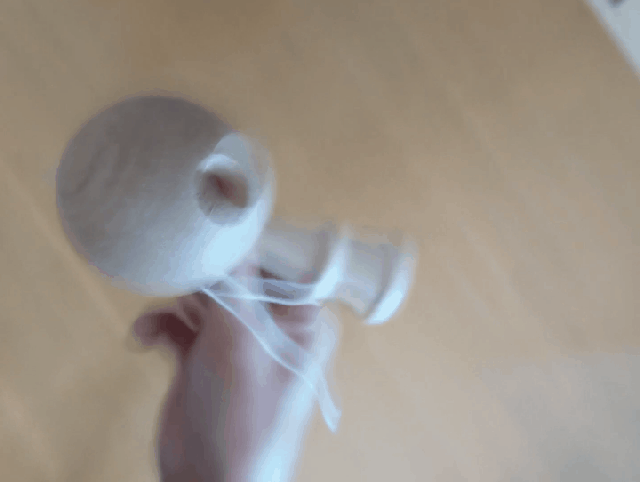
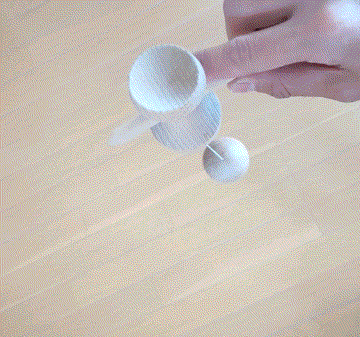
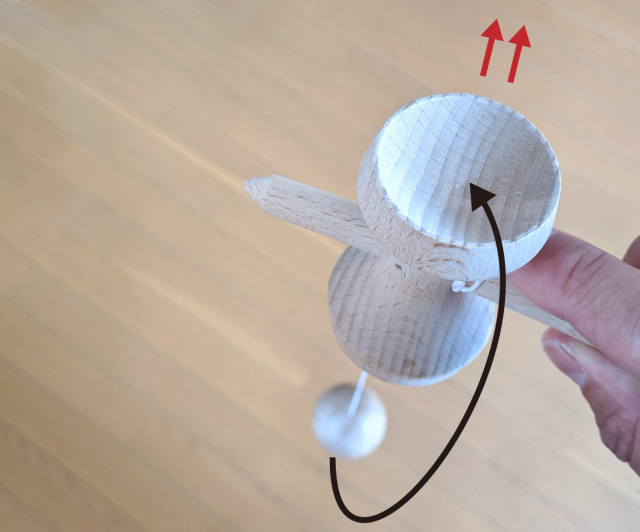


 Toy or extreme sport? Shop in Hokkaido changes our image of kendama
Toy or extreme sport? Shop in Hokkaido changes our image of kendama What makes a good boss in Japan? Workers sound off in survey
What makes a good boss in Japan? Workers sound off in survey Things get heavy with the Gold Lucky Bag from Village Vanguard
Things get heavy with the Gold Lucky Bag from Village Vanguard We revisited Sweets Paradise after a decade to see if Japan’s dessert buffet still delivers
We revisited Sweets Paradise after a decade to see if Japan’s dessert buffet still delivers Tokyo station platform to transform into sake bar with hot drinks, hot oden, and hot kotatsu
Tokyo station platform to transform into sake bar with hot drinks, hot oden, and hot kotatsu The Purple Lucky Bag from Village Vanguard is an extra-large waste of money
The Purple Lucky Bag from Village Vanguard is an extra-large waste of money This hotel has one of the coolest katana collections in Japan, and admission is totally free【Pics】
This hotel has one of the coolest katana collections in Japan, and admission is totally free【Pics】 Japanese beef bowl chain Sukiya’s 2026 Smile Box lucky bag basically pays for itself
Japanese beef bowl chain Sukiya’s 2026 Smile Box lucky bag basically pays for itself Rumors say Tokyo’s Sensoji Temple sticks you with bad fortunes, so we bought 100 to find out
Rumors say Tokyo’s Sensoji Temple sticks you with bad fortunes, so we bought 100 to find out 10 badass four-character phrases to add to your Japanese language toolkit
10 badass four-character phrases to add to your Japanese language toolkit Top Japanese cosplayer Enako returns to Comiket after 6 years, creates mayhem with admirers
Top Japanese cosplayer Enako returns to Comiket after 6 years, creates mayhem with admirers Starbucks Japan ready to get Year of the Horse started with adorable drinkware and plushies【Pics】
Starbucks Japan ready to get Year of the Horse started with adorable drinkware and plushies【Pics】 Hayao Miyazaki says Happy New Year to Studio Ghibli fans with new art for Year of the Horse
Hayao Miyazaki says Happy New Year to Studio Ghibli fans with new art for Year of the Horse Cup Noodle tries an authentic Jiro-style ramen, but something’s not quite right
Cup Noodle tries an authentic Jiro-style ramen, but something’s not quite right The best Starbucks Japan Frappuccinos we want to drink again in 2026
The best Starbucks Japan Frappuccinos we want to drink again in 2026 That time Seiji called JASRAC to ask why he didn’t get paid royalties for his song being on TV
That time Seiji called JASRAC to ask why he didn’t get paid royalties for his song being on TV We found possibly the quietest Japanese-style hotel in Tokyo’s bustling Shinjuku district
We found possibly the quietest Japanese-style hotel in Tokyo’s bustling Shinjuku district Pizza Hut Japan’s hot lucky bags are perfect for a New Year’s pizza party
Pizza Hut Japan’s hot lucky bags are perfect for a New Year’s pizza party Japan’s oldest largetooth sawfish in captivity back on display in Mie Prefecture
Japan’s oldest largetooth sawfish in captivity back on display in Mie Prefecture 7-Eleven Japan starts new temporary luggage storage service in over 300 branches
7-Eleven Japan starts new temporary luggage storage service in over 300 branches Disillusionment at Tsukiji’s tourist-target prices led us to a great ramen restaurant in Tokyo
Disillusionment at Tsukiji’s tourist-target prices led us to a great ramen restaurant in Tokyo Starbucks teams up with 166-year-old Kyoto doll maker for Year of the Horse decorations【Photos】
Starbucks teams up with 166-year-old Kyoto doll maker for Year of the Horse decorations【Photos】 Tokyo considering law requiring more trash cans following litter increase in heavily touristed area
Tokyo considering law requiring more trash cans following litter increase in heavily touristed area Tokyo’s Tsukiji sushi neighborhood asks tour groups to stay away for the rest of the month
Tokyo’s Tsukiji sushi neighborhood asks tour groups to stay away for the rest of the month Tokyo event lets you travel back in time, for free, to celebrate 100 years since Showa era start
Tokyo event lets you travel back in time, for free, to celebrate 100 years since Showa era start Japan may add Japanese language proficiency, lifestyle classes to permanent foreign resident requirements
Japan may add Japanese language proficiency, lifestyle classes to permanent foreign resident requirements Sanrio theme park in Japan announces plans to expand into a Sanrio resort
Sanrio theme park in Japan announces plans to expand into a Sanrio resort Stamina-destroying “Paralysis Noodles” are Tokyo’s newest over-the-top ramen innovation
Stamina-destroying “Paralysis Noodles” are Tokyo’s newest over-the-top ramen innovation Survey asks foreign tourists what bothered them in Japan, more than half gave same answer
Survey asks foreign tourists what bothered them in Japan, more than half gave same answer Japan’s human washing machines will go on sale to general public, demos to be held in Tokyo
Japan’s human washing machines will go on sale to general public, demos to be held in Tokyo Japan’s deadliest food claims more victims, but why do people keep eating it for New Year’s?
Japan’s deadliest food claims more victims, but why do people keep eating it for New Year’s? We deeply regret going into this tunnel on our walk in the mountains of Japan
We deeply regret going into this tunnel on our walk in the mountains of Japan Studio Ghibli releases Kodama forest spirits from Princess Mononoke to light up your home
Studio Ghibli releases Kodama forest spirits from Princess Mononoke to light up your home Major Japanese hotel chain says reservations via overseas booking sites may not be valid
Major Japanese hotel chain says reservations via overseas booking sites may not be valid Put sesame oil in your coffee? Japanese maker says it’s the best way to start your day【Taste test】
Put sesame oil in your coffee? Japanese maker says it’s the best way to start your day【Taste test】 No more using real katana for tourism activities, Japan’s National Police Agency says
No more using real katana for tourism activities, Japan’s National Police Agency says Starbucks Japan reveals new sakura drinkware collection, inspired by evening cherry blossoms
Starbucks Japan reveals new sakura drinkware collection, inspired by evening cherry blossoms Updated cherry blossom forecast shows extra-long sakura season for Japan this year
Updated cherry blossom forecast shows extra-long sakura season for Japan this year
Leave a Reply